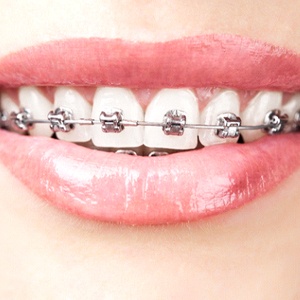Comprehensive Guide to Orthodontics Treatments for Remedying Oral Imbalances
In the world of orthodontics, the trip to achieving a perfectly straightened smile includes a myriad of procedures tailored to correct oral imbalances. From traditional dental braces to invisible aligners and also medical alternatives, the area of orthodontics offers a series of remedies to resolve varying degrees of dental abnormalities. Recognizing the intricacies of each treatment, including their devices, benefits, and potential disadvantages, is important in making notified decisions about one's orthodontic treatment. As we browse with the extensive overview to orthodontic treatments for dealing with oral misalignments, the complex information of each approach will unfold, clarifying the path toward a practical and unified oral placement.
Orthodontic Procedures Introduction

Routine adjustments and tracking are critical components of orthodontic therapy to ensure progress is on track and to make any required alterations along the method. By undergoing orthodontic procedures, clients can not just attain a straighter grin yet also boost their general dental health and feature.
Conventional Braces: Just How They Function
When considering orthodontic therapies for dental imbalances, conventional braces attract attention as a reliable method for remedying teeth positioning. Typical dental braces include brackets, wires, and bands that collaborate to apply continual pressure on the teeth, progressively moving them into the desired placement. The brackets are affixed to the teeth utilizing a special adhesive, and the cables are threaded through the braces. By changing the tension of the cables, orthodontists can control the instructions and force related to each tooth, guiding them right into correct positioning over time.
As pressure is applied to the teeth via the dental braces, the bone surrounding the teeth is reshaped to support the brand-new tooth settings. People will certainly need normal adjustments at the orthodontist's office to ensure the dental braces proceed to apply the proper stress for effective teeth movement.
Unnoticeable Aligners: Benefits And Drawbacks
Invisible aligners supply a convenient and very discreet alternative to typical dental braces for dealing with oral imbalances. These clear, tailor-made trays are basically invisible when put on, making them an appealing alternative for individuals seeking an extra aesthetically pleasing orthodontic treatment. Among the main benefits of unseen aligners is their removability, allowing for much easier maintenance of dental hygiene contrasted to conventional braces. Clients can get rid of the aligners prior to eating or cleaning their teeth, minimizing the danger of food getting embeded the device and streamlining the cleaning process.

Surgical Orthodontic Options
Surgical interventions in orthodontics existing practical options for dealing with complicated oral imbalances that may not be properly resolved via traditional orthodontic therapies. While standard braces and unnoticeable aligners can remedy many orthodontic concerns, particular instances require medical intervention to achieve ideal results. Surgical orthodontic choices are normally suggested for severe malocclusions, substantial jaw discrepancies, and situations where the underlying bone framework needs alteration to attain proper positioning.
One typical surgical orthodontic treatment is orthognathic surgical procedure, which involves repositioning the jaws to correct useful concerns such as trouble speaking or chewing. This surgery is typically carried out in cooperation with an orthodontist who assists line up the teeth before and after the procedure. Surgical orthodontics may additionally entail treatments to subject influenced teeth, remove excess periodontal cells, or reshape the jawbone to produce an extra harmonious face profile.
Prior to thinking about surgical orthodontic options, patients undertake a comprehensive examination to figure out the necessity and potential advantages of such interventions. orthodontist. While surgical procedure may appear difficult, it can significantly improve both the feature and visual appeals of the smile in cases where conventional orthodontic treatments drop short
Retainers and Post-Treatment Treatment

Post-treatment treatment involves adhering to the orthodontist's directions diligently. This might include correct dental hygiene techniques, going to follow-up visits, and wearing the retainers as recommended. Failing to abide by post-treatment treatment directions can lead to relapse, where the teeth gradually relocate back towards their initial settings. Consistent retainer wear, excellent oral health, and normal oral exams are necessary for maintaining the results accomplished via orthodontic surgical treatment and guaranteeing the long-lasting security of the dealt with dental placement.
Verdict
To conclude, orthodontic treatments supply different choices for remedying oral imbalances. Typical braces use steel brackets and cords to move teeth right into appropriate alignment. Unnoticeable aligners offer a more discreet choice however might not appropriate for all situations. Surgical orthodontic alternatives are offered for more serious misalignments. Retainers are typically made use of post-treatment to preserve the brand-new placement. In general, orthodontic treatments can successfully enhance dental health and wellness and aesthetic look.
As we navigate via the thorough guide to orthodontic treatments for correcting dental misalignments, the intricate information of each approach will certainly unravel, losing light on the course towards a unified and practical oral alignment. - cumming orthodontist
One of the most typical orthodontic therapies is navigate to this site the usage of dental braces, which consist of metal brackets and cords that use mild stress to slowly move teeth into the preferred setting.When taking into consideration orthodontic treatments for oral misalignments, typical braces stand out as a time-tested method for dealing with teeth positioning. Additionally, invisible aligners may not be suitable for complex orthodontic issues that require more considerable teeth activity, as they are typically suggested for light to moderate instances. Retainers are tailor-made orthodontic gadgets created to hold teeth in their remedied placements after the completion of orthodontic therapy.